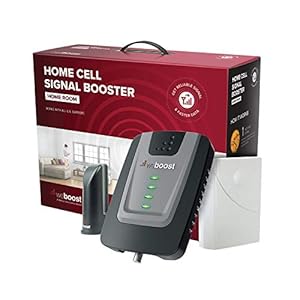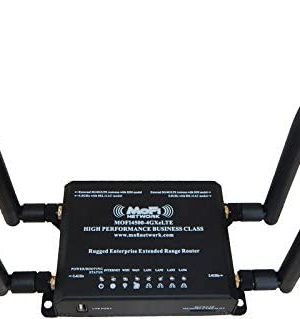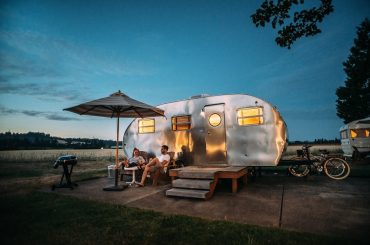If you are looking for advice on how to get high speed internet while full time RV living in a travel trailer, motorhome, camper van or other kind of RV then you need advice that is relevant for the current time we live in. Many articles about how to get internet are out of date, and recommend data plans and products that no longer exist.
In this article I will provide advice that is relevant for 2020, as the covid epidemic lockdowns and economic impact has killed off many internet carriers that full time RV living people once used and left behind far fewer options. Those which remain around have canceled most of their unlimited data plans as well.
How to Access Free Wifi For RV Living
The easiest way to get free wi-fi is from a campsite at an RV park that offers free public internet wifi, or alternatively from local restaurants, libraries and other places that offer free wifi internet. I have spent a great deal of time at Starbucks and Panera Bread using their internet after ordering a drink and sometimes even a sandwich. I sometimes also use free wifi at McDonalds, but it depends on the location as some McDonalds will attract homeless people so the staff tend to have policies to kick people out if they try to stay longer than 30 minutes. So you should be mindful of the local policies.
Now if you have a wifi range extender unit, such as what comes built into Winguard units, then you can sometimes park outside one of these restaurants or even the local library and tap into their free wifi from within your camper van, motorhome or travel trailer from the parking lot. I have been able to do this sometimes while boondocking within cities.
Keep in mind that even while at an RV park that offers free wifi you will nearly always need to have an external wifi range extender that can grab the signal from outside of your RV camper, travel trailer, motorhome or van and bring that signal inside your RV. This is because the metal exterior of your motorhome tends to bounce the signal away and makes it hard for your laptop, tablets and other devices to tap into it. So you need to use an extender, then have your devices connect to that extender.
I have a Winegard Connect 2.0 installed on my travel trailer. These units are expensive but tend to provide the best connection. You should ensure that it is correctly installed before going on a trip to use it; test it at home to ensure that it won’t drop the connection within an hour of any usage. Sometimes the boards are defective and you have to email Winegard to get a replacement unit.
Cellular Hotspot 4G and 5G Internet Plans
Years ago people used things like the Verizon Jetpack with an Unlimited Internet plan to provide internet for their RV needs, but these plans and units are no longer sold. I myself used one of these units until the plans were canceled. Over the years there have been many fly by night carrier companies that offer resales of unlimited internet packages but they come and go as the networks themselves cancel agreements.
Today most new smartphones can function as very effective hotspots and you no longer need a dedicated unit. The most reliable 4G internet hotspot I currently use is through my family plan with Verizon but it is very expensive and caps at 50 GB per month per device. Yet by using 2 tablets and my personal phone, I am able to utilize 150 GB of data per month. This has usually been enough for me to do my computer work on but costs around $300 per month with my plan — which is more expensive than I like. The devices themselves, such as my tablets, do have unlimited data caps for doing things like watching YouTube and Netflix so instead of using my TV I would watch my internet streaming videos on my tablet and only use my TV for non-internet based gaming and movie watching.
Many RV campers use a cell phone signal boosting device, such as WeBoost to greatly expand their cellular signal range. These units are pricier but worth it if you do a lot of backwoods camping and still want to be able to access cell signals.
Now that I share what I do, I will tell you what some other campers do. It is also popular to purchase several cellular internet plans with two different vendors (AT&T and Verizon, usually) and install the SIM cards into a MoFi 4500 4G LTE Router. When you want to change the plan you are using after capping on the bandwidth, then just switch to the other SIM card. This is an expensive option but if you make enough money from your remote work it can be a justifiable expense.
RV Internet for Gaming
The only effective solution you’re going to have for internet gaming inside a RV travel trailer, motorhome, camper van is a landline; either cable internet or DSL internet. This is because satellite plans are very expensive and generally unreliable for the connection you need, and while 4G and 5G hotspots can be reliable enough to provide internet gaming speeds the plans are very restrictive on data, usually capped at around 50 GB per month for something like $300 per month. This means the only solution that is cost effective and reliable for internet gaming is going to be a landline internet connection from cable or DSL.
There are many people who do very complicated things to get their internet routers inside their travel trailers but I have a very simple solution that involves placing the router inside one of your exterior compartments. Please watch the video below for how I install landline DSL / Cable internet connection into my Airstream travel trailer. This solution will work for nearly any travel trailer.
Now if you for some reason do not have any exterior compartments, what you can do is drill a connection into your vehicle, either from below or from the roof. For most travel trailers I would suggest installing through the roof, and ensuring that you cover the connection with a lid when not in use.
Should You Use Satellite Internet For RV Living?
Twenty years ago satellite internet connection was once the only option for internet access in an RV, and is usually provided by a carrier. The problem is these plans tend to cost as much as $300 a month or more and the cost for the initial equipment is thousands of dollars. I really don’t recommend that you use these plans as there is always a better option unless you are deep into the mountains.
While there are cheaper plans for satellite internet depending on region, the problem is you have to stay within those regions to take advantage of the plans. Full time RVers who travel need plans that will work anywhere they go.







